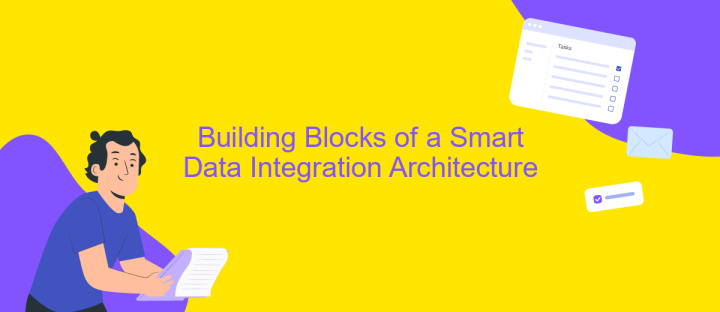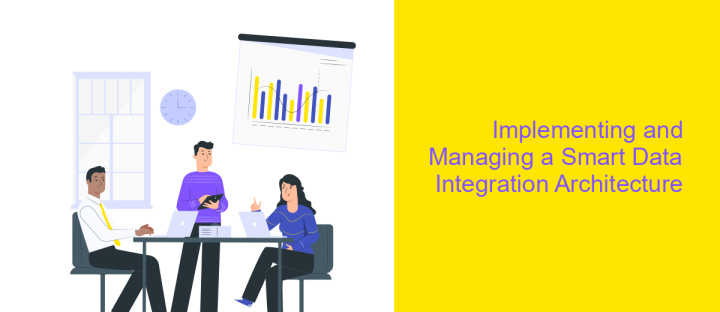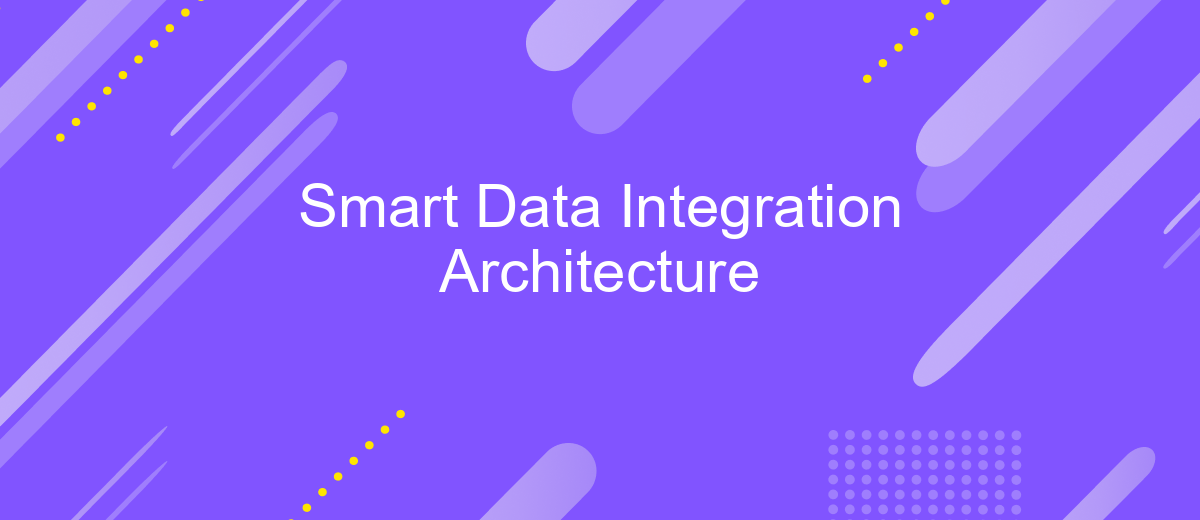Smart Data Integration Architecture
In today's data-driven world, organizations are inundated with vast amounts of information from diverse sources. Smart Data Integration Architecture emerges as a crucial solution, enabling seamless data consolidation and management. By leveraging advanced technologies and intelligent design, this architecture ensures efficient data flow, enhances decision-making, and drives innovation. This article explores the key components and benefits of implementing a Smart Data Integration Architecture in modern enterprises.
Understanding Smart Data Integration: Challenges and Opportunities
Smart data integration is a pivotal component in modern data management, facilitating seamless connectivity between disparate data sources. However, the journey towards effective integration is fraught with challenges that organizations must navigate. One significant hurdle is ensuring data quality and consistency across various platforms. Additionally, integrating legacy systems with new technologies often leads to compatibility issues, requiring innovative solutions to bridge these gaps.
- Data Quality: Maintaining high standards across diverse sources.
- Compatibility: Bridging old and new systems efficiently.
- Scalability: Ensuring the system can grow with data demands.
- Security: Protecting sensitive information during integration.
Despite these challenges, smart data integration offers substantial opportunities. By leveraging advanced analytics, organizations can gain deeper insights and make informed decisions. The ability to integrate data in real-time enhances operational efficiency and drives innovation. Furthermore, a robust integration architecture can provide a competitive edge by enabling businesses to respond swiftly to market changes, ultimately leading to improved performance and growth.
Key Principles of a Smart Data Integration Architecture

Smart data integration architecture is built on the foundational principle of seamless connectivity, ensuring that disparate data sources can communicate effortlessly. This architecture prioritizes flexibility, allowing for the integration of various data formats and sources, whether on-premises or cloud-based. By employing advanced technologies such as AI and machine learning, smart integration systems can automate data mapping and transformation processes, reducing manual intervention and enhancing efficiency. Additionally, it is crucial to maintain data integrity and security throughout the integration process, safeguarding sensitive information from potential threats.
Another key principle is scalability, which ensures that the integration architecture can grow alongside the organization's data needs. This is where tools like ApiX-Drive become invaluable, offering a user-friendly platform for setting up and managing integrations without requiring extensive technical expertise. ApiX-Drive facilitates the automation of data workflows, enabling businesses to adapt quickly to changing demands. Moreover, real-time data processing capabilities are essential, allowing organizations to make informed decisions based on the most current information available. By adhering to these principles, smart data integration architecture can support dynamic business environments and drive data-driven decision-making.
Building Blocks of a Smart Data Integration Architecture

In the realm of data integration, a smart architecture is essential for seamlessly connecting disparate data sources and enabling efficient data flow. The foundation of a smart data integration architecture lies in its ability to ensure scalability, flexibility, and security while handling diverse data formats and volumes.
- Data Ingestion Layer: This layer is responsible for collecting data from various sources, including databases, APIs, and IoT devices, ensuring that data is captured in real-time or batch modes as required.
- Data Transformation and Processing: In this stage, raw data is cleansed, transformed, and enriched to meet the analytical and operational needs of the organization, using tools like ETL (Extract, Transform, Load) and data wrangling.
- Data Storage: A robust storage solution, such as a data lake or data warehouse, is essential for storing both structured and unstructured data, allowing for efficient querying and retrieval.
- Data Governance and Security: Implementing strong governance frameworks ensures data quality, compliance, and security, protecting sensitive information across the data lifecycle.
- Data Delivery and Visualization: This final layer ensures that processed data is delivered to end-users through dashboards, reports, and other visualization tools, facilitating data-driven decision-making.
By integrating these building blocks, organizations can create a cohesive and intelligent data integration architecture that not only supports current data demands but also adapts to future technological advancements and business needs.
Implementing and Managing a Smart Data Integration Architecture

Implementing a Smart Data Integration Architecture requires a comprehensive understanding of existing data systems and the specific needs of your organization. Begin by assessing the current data landscape, identifying data sources, and understanding how data flows across systems. This foundational step ensures that the architecture is tailored to meet organizational goals and supports seamless data integration.
Once the data landscape is mapped, selecting the right tools and technologies is crucial. Consider factors such as scalability, compatibility, and ease of use. Opt for solutions that offer flexibility and support for various data formats and protocols. Implementing robust data governance practices is also essential to maintain data quality and security.
- Define clear data integration goals and objectives.
- Choose scalable and flexible integration tools.
- Establish strong data governance and security measures.
- Continuously monitor and optimize data flows.
Effective management of a Smart Data Integration Architecture involves continuous monitoring and optimization. Regularly review data processes to identify bottlenecks and areas for improvement. Employ analytics to gain insights into data usage patterns and adjust strategies accordingly. This proactive approach ensures that the integration architecture remains efficient and responsive to changing business needs.


Future Trends in Smart Data Integration
As we look to the future of smart data integration, several key trends are emerging. One significant trend is the increasing use of artificial intelligence and machine learning to automate and optimize data integration processes. These technologies can enhance the accuracy and efficiency of data handling, reducing manual intervention and enabling real-time data processing. Additionally, the rise of edge computing is transforming how data is collected and integrated, allowing for faster decision-making and reduced latency by processing data closer to its source.
Another trend is the growing importance of interoperability and the need for seamless integration across diverse systems and platforms. Services like ApiX-Drive are becoming crucial, providing user-friendly solutions for connecting various applications without extensive coding knowledge. This democratization of data integration empowers businesses of all sizes to leverage their data more effectively. Furthermore, the focus on data privacy and security is intensifying, with new regulations and technologies ensuring that data integration processes comply with stringent standards, safeguarding sensitive information while promoting transparency and trust.
FAQ
What is Smart Data Integration Architecture?
How does Smart Data Integration Architecture benefit businesses?
What are the key components of Smart Data Integration Architecture?
How can businesses implement Smart Data Integration Architecture effectively?
What challenges might businesses face with Smart Data Integration Architecture?
Apix-Drive will help optimize business processes, save you from a lot of routine tasks and unnecessary costs for automation, attracting additional specialists. Try setting up a free test connection with ApiX-Drive and see for yourself. Now you have to think about where to invest the freed time and money!

